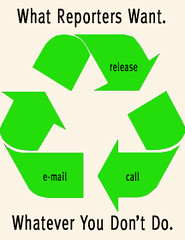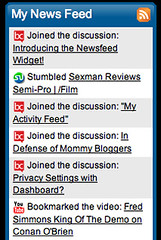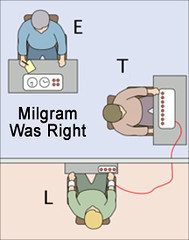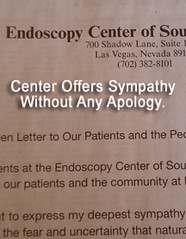If the news release is dying, it’s because public relations is killing it.
The vast majority of news releases being sent out today are nothing more than mass blast marketing-laced one sheets that attempt to decorate non-news as news, much in the same way someone might put silly hats and rubber noses on grumpy salespeople and call them the life of the party. It doesn’t really work. If anything, silly hats and rubber noses might just make them grumpier.
At least that seems to be the underlying consensus of reporters, journalists, editors, and even public relations professionals who are discouraged by the growing spam factor associated with public relations today. After speaking with dozens of professionals online and off, it all points to one thing — it doesn’t matter what they are — releases, pitch calls, e-mail teasers, blast faxes, etc. — there is no silver bullet, except one.
News that can be easily identified in the first sentence.
If you have real news, it hardly matters how you send it — by fax, e-mail, carrier pigeon, or on a roll of toilet paper. Why? Because, um, it’s news. Unfortunately, most companies do not release news at all. They tell their public relations firm to send out sales information, and the public relations firm sends it out. Once upon a time, a lead sentence sold the story. Now, the lead sentence sells nothing.
Here’s a sampling of lead lines bouncing around out there today:
Lead: “Ask police officers why they chose law enforcement as a profession, and very few would likely say they got into it for all the paperwork.”
Translated: “We have a new product and we hope all law enforcement will buy it.”
Lead: “Cruise West, a leading innovator of small-ship itineraries, has unveiled a new California Wine Country Spa Package to be paired with its California cruises for 2008.”
Translated: “We want to leverage journalists for advertorial space.”
Lead: “K-Swiss has announced the opening of its first US retail endeavor, which will take form as a branded "Pop-Up" store.”
Translated: “If you’ve never heard of a “Pop-Up” store, it must be news, maybe.” (I'm still stuck on opening an endeavor.)
Maybe it's not “news releases.” Maybe it's the people writing them.
It just might be. And that's not the worst of it. Ever since I asked how public relations gets the word out, I've been hearing some pretty tall tales.
I’ve been told public relations is anything and everything from leveraging relationships with reporters to having a super huge data base (and that it is a function of marketing). I’ve been told to never send releases and always send releases. I’ve been told that pitches work best by phone, by e-mail, and, my personal favorite, by casually dropping by the reporter’s desk after purchasing an advertisement.
Egad! Has the profession gone batty? What do these people do?
The seven deadly sins of the modern public relations professional as told to me by public relations professionals.
Lust — Relationship Pandering If you’re leveraging relationships with journalists to pick up more accounts or trying to convince reporters to run non-news like it is news, then it's not a relationship. It’s manipulation.
Greed — Client leveraging. If you’re leveraging one big client brand in order to secure smaller clients and then dovetail small client non-news onto big client real news, that’s not public relations. It’s greed, paid for by your big client.
Gluttony — Pitching Stories. Spam is not the answer. Journalists are directing people to pitch stories to whatever communication stream seems less inundated. But mostly, journalists just want news that focuses on what they write about. If you don’t know what they write about, then don’t spam them.
Sloth — Traditional Releases. Journalists are starting to prefer pitches over releases, but only because it’s easier to read two butchered sentences than several butchered paragraphs. Skip the fluff, stick to the facts, and if you're not willing to find news about your client or write something worth reading, then don’t write anything.
Wrath — Social Media Releases. They have their place, but they are not the end all to “modern” public relations. Using them as some sort of revenge mechanism against mainstream media for not running all the non-news stories is inappropriate. The simple truth is that most social media releases are truncated traditional releases with links and even more marketing puff.
Pride — Renaming Games. Everyone is renaming everything for the sake of sounding intelligent and it needs to stop. Seriously, just stop it. Renaming social media is out of control — social computing, new media, digital media, social networking, life streaming, buzz marketing, viral marketing, virtual branding, alternative media, Internet marketing, etc. — especially if the reason is to one up everyone with a new definition. Nobody cares who coined the term.
Envy — Insatiable Illusions. If you are promising clients that a certain amount of releases will run every month, that column inches or hits mean anything, that news embargoes work long term, that mix and matching headlines can turn entertainment news into business news and vice versa, or that your client putting his pants on one leg at a time deserves a press conference because their competitor got lucky last week, you are no longer in public relations. You’re a trickster selling envy.
What happened to performing work instead of working the performance?
First and foremost, none of this seems related to public relations as much as media relations. Second, media relations, much like public relations, does not fit in tidy little boxes with check lists, no matter what accidental successes imply. Third, like most communication, simple is better than complex.
Find some real news within a company (it’s not always obvious) and communicate that news to journalists who would have a real interest. Let them know by whatever means they prefer: phone, e-mail, release, toilet paper, whatever. You may want to write a factual well-written release in case they need a backgrounder (which you can also distribute via the wire or on a Web site). If you want to claim it’s a social media release with links, etc., oh boy, knock yourself out.
Do this a few times without wasting anyone’s time and you will likely develop some great relationships with the media built around trust and mutual respect. All that, without name-dropping who you had lunch with.

The vast majority of news releases being sent out today are nothing more than mass blast marketing-laced one sheets that attempt to decorate non-news as news, much in the same way someone might put silly hats and rubber noses on grumpy salespeople and call them the life of the party. It doesn’t really work. If anything, silly hats and rubber noses might just make them grumpier.
At least that seems to be the underlying consensus of reporters, journalists, editors, and even public relations professionals who are discouraged by the growing spam factor associated with public relations today. After speaking with dozens of professionals online and off, it all points to one thing — it doesn’t matter what they are — releases, pitch calls, e-mail teasers, blast faxes, etc. — there is no silver bullet, except one.
News that can be easily identified in the first sentence.
If you have real news, it hardly matters how you send it — by fax, e-mail, carrier pigeon, or on a roll of toilet paper. Why? Because, um, it’s news. Unfortunately, most companies do not release news at all. They tell their public relations firm to send out sales information, and the public relations firm sends it out. Once upon a time, a lead sentence sold the story. Now, the lead sentence sells nothing.
Here’s a sampling of lead lines bouncing around out there today:
Lead: “Ask police officers why they chose law enforcement as a profession, and very few would likely say they got into it for all the paperwork.”
Translated: “We have a new product and we hope all law enforcement will buy it.”
Lead: “Cruise West, a leading innovator of small-ship itineraries, has unveiled a new California Wine Country Spa Package to be paired with its California cruises for 2008.”
Translated: “We want to leverage journalists for advertorial space.”
Lead: “K-Swiss has announced the opening of its first US retail endeavor, which will take form as a branded "Pop-Up" store.”
Translated: “If you’ve never heard of a “Pop-Up” store, it must be news, maybe.” (I'm still stuck on opening an endeavor.)
Maybe it's not “news releases.” Maybe it's the people writing them.
It just might be. And that's not the worst of it. Ever since I asked how public relations gets the word out, I've been hearing some pretty tall tales.
I’ve been told public relations is anything and everything from leveraging relationships with reporters to having a super huge data base (and that it is a function of marketing). I’ve been told to never send releases and always send releases. I’ve been told that pitches work best by phone, by e-mail, and, my personal favorite, by casually dropping by the reporter’s desk after purchasing an advertisement.
Egad! Has the profession gone batty? What do these people do?
The seven deadly sins of the modern public relations professional as told to me by public relations professionals.
Lust — Relationship Pandering If you’re leveraging relationships with journalists to pick up more accounts or trying to convince reporters to run non-news like it is news, then it's not a relationship. It’s manipulation.
Greed — Client leveraging. If you’re leveraging one big client brand in order to secure smaller clients and then dovetail small client non-news onto big client real news, that’s not public relations. It’s greed, paid for by your big client.
Gluttony — Pitching Stories. Spam is not the answer. Journalists are directing people to pitch stories to whatever communication stream seems less inundated. But mostly, journalists just want news that focuses on what they write about. If you don’t know what they write about, then don’t spam them.
Sloth — Traditional Releases. Journalists are starting to prefer pitches over releases, but only because it’s easier to read two butchered sentences than several butchered paragraphs. Skip the fluff, stick to the facts, and if you're not willing to find news about your client or write something worth reading, then don’t write anything.
Wrath — Social Media Releases. They have their place, but they are not the end all to “modern” public relations. Using them as some sort of revenge mechanism against mainstream media for not running all the non-news stories is inappropriate. The simple truth is that most social media releases are truncated traditional releases with links and even more marketing puff.
Pride — Renaming Games. Everyone is renaming everything for the sake of sounding intelligent and it needs to stop. Seriously, just stop it. Renaming social media is out of control — social computing, new media, digital media, social networking, life streaming, buzz marketing, viral marketing, virtual branding, alternative media, Internet marketing, etc. — especially if the reason is to one up everyone with a new definition. Nobody cares who coined the term.
Envy — Insatiable Illusions. If you are promising clients that a certain amount of releases will run every month, that column inches or hits mean anything, that news embargoes work long term, that mix and matching headlines can turn entertainment news into business news and vice versa, or that your client putting his pants on one leg at a time deserves a press conference because their competitor got lucky last week, you are no longer in public relations. You’re a trickster selling envy.
What happened to performing work instead of working the performance?
First and foremost, none of this seems related to public relations as much as media relations. Second, media relations, much like public relations, does not fit in tidy little boxes with check lists, no matter what accidental successes imply. Third, like most communication, simple is better than complex.
Find some real news within a company (it’s not always obvious) and communicate that news to journalists who would have a real interest. Let them know by whatever means they prefer: phone, e-mail, release, toilet paper, whatever. You may want to write a factual well-written release in case they need a backgrounder (which you can also distribute via the wire or on a Web site). If you want to claim it’s a social media release with links, etc., oh boy, knock yourself out.
Do this a few times without wasting anyone’s time and you will likely develop some great relationships with the media built around trust and mutual respect. All that, without name-dropping who you had lunch with.





















